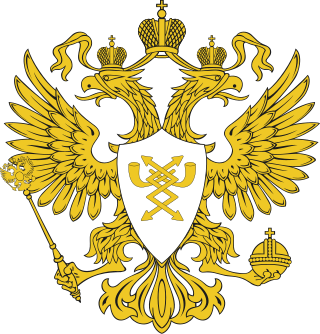Telecommunications had an early beginning in Mauritius, with the first telephone line installed in 1883, seven years after the invention of the telephone. Over the years, the network and telephony improved. By the late 20th century, the rapid development and convergence of information and telecommunications technologies gave rise to an ICT industry on the island along with many incentives provided by the government. The government thus aims to make the ICT sector the 5th pillar of the Mauritian economy and Mauritius a Cyber Island. Historically, the country is known for tourism, rather than its call centers and business process outsourcing.
The People's Republic of China possesses a diversified communications system that links all parts of the country by Internet, telephone, telegraph, radio, and television. The country is served by an extensive system of automatic telephone exchanges connected by modern networks of fiber-optic cable, coaxial cable, microwave radio relay, and a domestic satellite system; cellular telephone service is widely available, expanding rapidly, and includes roaming service to foreign countries. Fiber to the x infrastructure has been expanded rapidly in recent years.

King Mongkut's Institute of Technology Ladkrabang is a research and educational institution in Thailand. It is situated in Lat Krabang District, Bangkok approximately 30 km east of the city center. The university consists of nine faculties: engineering, architecture, science, industrial education and technology, agricultural technology, information technology, food industry, liberal arts, and medicine.

Telecommunications engineering is a subfield of electronics engineering which seeks to design and devise systems of communication at a distance. The work ranges from basic circuit design to strategic mass developments. A telecommunication engineer is responsible for designing and overseeing the installation of telecommunications equipment and facilities, such as complex electronic switching system, and other plain old telephone service facilities, optical fiber cabling, IP networks, and microwave transmission systems. Telecommunications engineering also overlaps with broadcast engineering.

The Ministry of Industry and Information Technology (MIIT) is the sixth-ranked executive department of the State Council of the People's Republic of China. It is responsible for regulation and development of the postal service, Internet, wireless, broadcasting, communications, production of electronic and information goods, software industry and the promotion of the national knowledge economy.

The Indian Telegraph Act, 1885 was the enabling legislation in India which governed the use of wired and wireless telegraphy, telephones, teletype, radio communications and digital data communications. It gives the Government of India exclusive jurisdiction and privileges for establishing, maintaining, operating, licensing and oversight of all forms of wired and wireless communications within Indian territory. It also authorizes government law enforcement agencies to monitor/intercept communications and tap phone lines under conditions defined within the Indian Constitution. The act came into force on 1 October 1885. Since that time, numerous amendments have been passed to update the act to respond to changes in technology.
The Ministry of Communications was set up in 1924 as a government ministry of the Kingdom of Italy, dealing with postal, telephone, telegraph and electronic communications, journalistic information and commercial advertising. Since the Berlusconi IV Cabinet of 2008 it has been incorporated into the Ministry of Economic Development.
The Indian Telecommunication Service, widely known as ITS, and earlier known as Telegraph Engineering Service Class I is one of the Central Civil Services under Group 'A' of the executive branch of the Government of India. The appointment to this service is done through Combined Engineering Services Exam held every year by Union Public Service Commission (UPSC) of India. The service was created to meet the techno managerial needs of the government in areas related to telecommunications. The Department of Telecommunications (DoT) had been managed for years by the officers of this permanent cadre, called the Indian Telecommunications Service (ITS). The officers of ITS work under restrictions and rules of Central Civil Services (Conduct) rules.

Indian Institute of Information Technology, Design and Manufacturing, Kancheepuram is a public institution established in 2007 by the Ministry of Human Resource Development, Government of India to pursue design and manufacturing oriented engineering education, research and to promote the competitive advantage of Indian products in global markets.

The Ministry of Digital Development, Communications and Mass Media of the Russian Federation, also known as MinTsifry Rossii, is a ministry of the Government of Russia responsible for telecommunications, media and the post.
Ministry of Information and Communications is the government ministry in Vietnam. It is responsible for administration and regulation of newspapers, publishing, the postal service, telecommunications, internet, broadcasting, radio and radio frequency, information technology, electronics, television and national media infrastructure.

The Ministry of Electronics and Information Technology (MEITy) is an executive agency of the Union Government of the Republic of India. It was carved out of the Ministry of Communications and Information Technology on 19 July 2016 as a standalone ministerial agency responsible for IT policy, strategy and development of the electronics industry. Under the sponsorship of the Ministry of Electronics and Information Technology, the "Northeast Heritage" Web, owned by the Government of India, publishes information on Northeast India, in 5 Indian languages, Assamese, Meitei (Manipuri), Bodo, Khasi and Mizo, in addition to Hindi and English.

The Ministry of Communication and Information Technology(Nepali: सूचना तथा सञ्चार प्रविधि मन्त्रालय) is governmental body of Nepal that manages postal services, telecommunications, broadcasting, press and information and film development in the country.

Telephone / Telecom Advisory Committees (TAC) is a high level Indian government body made up of members of parliament and other members nominated by the Ministry of Communications and Information Technology to address issues concerning telecommunication in India. Looked upon as a privileged panel, the Telephone Advisory Committees, constituted by the Ministry of Communications and Information Technology (India) of the Government of India to serve as a vital feedback mechanism for improvement of services in the Telecommunications sector by the Department of Telecommunications

Ministry of Communications is a Central ministry under the Government of India responsible for telecommunications and postal service. It was carved out of Ministry of Communications and Information Technology on 19 July 2016.

Telecom Advisory Committee (TAC) is a high level Indian government body made up of members of parliament and other members nominated by the Ministry of Communications and Information Technology to address issues concerning telecommunication in India. Looked upon as a privileged panel, the Telecom Advisory Committees, constituted by the Ministry of Communications and Information Technology (India) of the Government of India to serve as a vital feedback mechanism for improvement of services in the Telecommunications sector by the Department of Telecommunications.

Ministry of Transport and Communications is a government ministry of Myanmar responsible for regulating the transport and communication sectors. The ministry is currently led by Admiral Tin Aung San. Under the state of emergency immediately after the 2021 coup, he was appointed by the State Administration Council on 3 February 2021. In this regard, the Committee Representing Pyidaungsu Hluttaw claims that the military regime's cabinet is illegitimate.

The India Mobile Congress (IMC) is a digital technologies' forum in Asia consisting of a three-day international conference and a technology exhibition. The event is envisioned to be the "leading platform for India's start-up and technology ecosystem." Within the telecommunications and technology industry, IMC is claimed to be the "largest digital technology forum in Asia." The event is organized jointly by the Cellular Operators Association of India (COAI) and the Department of Telecommunications (DoT) of the Government of India. The forum aims to be a platform for industry, businesses, regulators and policymakers to discuss and deliberate on critical issues affecting the growth of the telecom and technology sector. In its first two iterations, the IMC focused on transformative 5G technology and most of the booths showcased various use-cases and scenarios where 5G would play an important role; the exhibitors included service providers, OEMs and infrastructure providers.

The Minister of Communications is the head of the Ministry of Communications and a senior member of the union council of ministers of the Government of India. The portfolio is usually held by a minister with cabinet rank who is a senior member of the council of ministers and is often assisted by one or two junior ministers or the Ministers of State.





















































